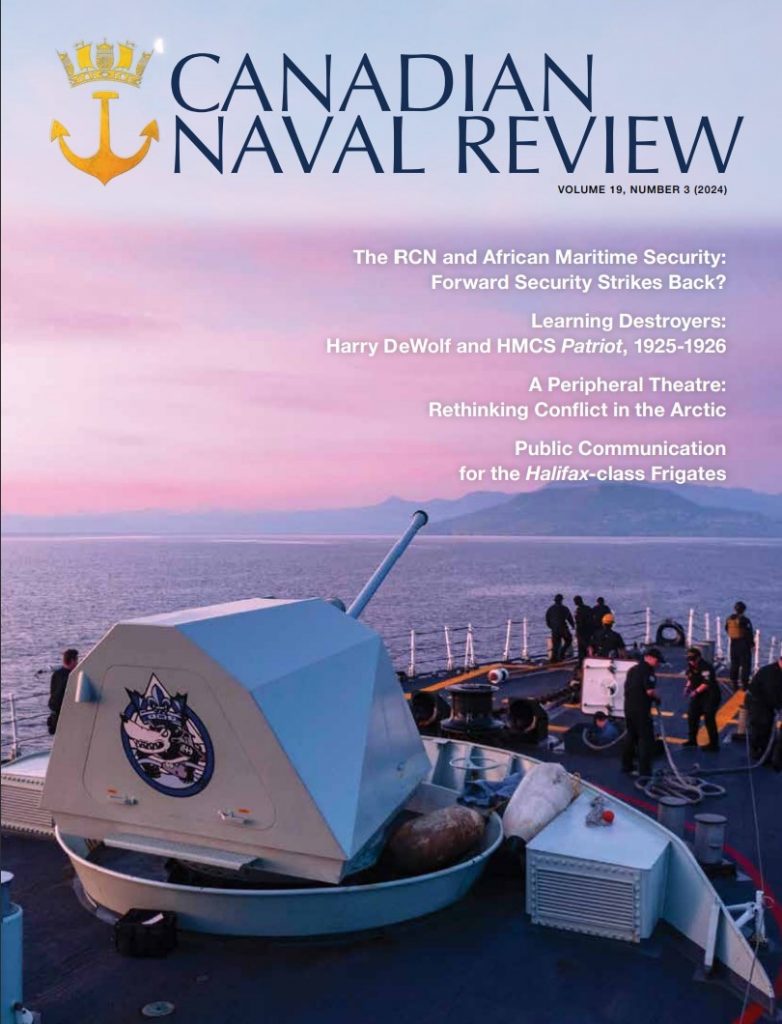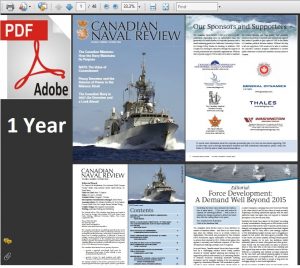Vigilance Class and the Possibilities: Part 3
By Mikael Perron, 24 July 2024

In terms of organisation, how could the Vigilance-class fit the RCN? First, the Kingston-class was originally supposed to be operated by the Naval Reserve members. This has now changed, and the ships are now operated by a mix of regular and reserve sailors. I believe that a reorganization of the Naval Reserve is much overdue. We need two kinds of Naval Reservist. We need some as we know them now, meaning direct entry people but we need them only in specific trades that can be easily and quickly trained to go on any class of ships -- trades like Boatswain, clerk and supply technicians. I would then create a new type of naval reservist. It would be a bit like the Air reserve. It would be people who are minimum QL5 qualified and that are retired from the Regular Forces. They would be from all trades (I am thinking here Marine Engineer Technician, Combat System Marine Technician but others also). They would work so many days per month on A class and could do B or C class contract if they chose to do so. Like in the RCAF, they would work during business days alongside the Regular Forces counterparts. They could share their expertise through support of our training facilities. They could also support maintenance teams ashore while the crew takes rest and conducts refresher training. A lot of expertise could be kept and shared this way. I found this to work well in the RCAF. I believe that the Naval Reserve holds much more potential that is being actually used.
But that does not solve it all. The addition of 18 or so Vigilance-class vessels over 12 Kingston-class would be a great retention tool; not only by the quick purchase of modern platforms but by the many promotion and transfer opportunities. The RCN needs many positions to develop leadership at the NCM and officer level. It is no secret the naval leadership is under-represented at NDHQ and that we need to develop more individuals if we want to see a sailor for CDS more regularly!
Post continues on the Broadsides Forum
Trending now:
- Vigilance Class and the Possibilities: Part 3
- Vigilance Class and the Possibilities: Part 2
- Vigilance Class and the Possibilities: Part 1
- New Chief of the Defence Staff
- Canadian Patrol Submarine Plans Announced
- Canadian Military Budget Projections for Military Equipment
- River-Class Destroyers
- Australia Cuts First Steel on Hunter Class Frigate
- Canada Confronts Russia in Cuba
- An Updated Kingston-class Replacement Pitch
- SAAB, Subs and Timelines
- Seaspan Polar Class 2 Heavy Icebreaker and Hanwha Ocean Submarine Team-ups
- Design Fiddling Stalls Constellation-class Frigate Program
- Attempting the Impossible?
- CNR sponsors: visit page
Latest Issue: Spring 2024

Volume 20, Number 1 (2024)
This spring issue marks 20 years of producing Canadian Naval Review. How time flies! It seems like just yesterday we started this journey – but it’s been 20 years and we still haven’t run out of interesting things to discuss in CNR. We’re a bit biased, but we think this issue is another great one. Prepare to be amazed and delighted!
In this issue, we’re very pleased to present an interview with Rear-Admiral Josée Kurtz that took place at the end of January. CNR Editor Ann Griffiths sat down and had a great chat with the Admiral, discussing everything from budgets to RCN priorities to personnel to assets to tampons in the men’s washrooms.
Our first article, “A Case Study on the Creation and Use of a Bridge Simulator,” is an inspiring story about what you can do if you have the determination, energy and enthusiasm to do it. Read this and you can learn about building your own simulated bridge simulator for $30,000! This article goes well with the Editorial for this issue which is also about bridge simulators. Our next article is a nod to the 100th birthday of the RCAF, entitled “The Influence of the RCAF on the RCN (Air Branch).” The article examines the historic interaction – which was not always amicable – and development of the relations between the RCN and RCAF.
In this issue we also have a smorgasbord of tasty Making Wave commentaries. We learn about: RCN recruitment and suggestions for its improvement; how utilizing uncrewed vehicles may be more challenging for Canada than for other countries; the problems of procurement; a suggestion that Canada should join the AUKUS submarine deal; and the future prospects of naval task groups as the CSCs are built. As well, we have our usual columns. We know what Russia is doing in its West (i.e., invading/attacking Ukraine!), but what about the territories on its Pacific coast? And we learn that, despite recent news of some extra funding for the military, Canada is nonetheless in NATO’s ‘quadrant of shame.’
Naturally, there are amazing photos to illustrate everything! We have no doubt that you will find this issue insightful and engaging. See the Table of Contents below.
If you don’t have a subscription yet, you should get one so you don’t miss anything.
Click through to check out the table of contents and download!
CNR resources

- Previous Issues
- CNR Archives (2005-2023)
- Subject Index for CNR Articles
- Broadsides Forum - Join the Discussion
- Submissions to Canadian Naval Review
- Subscriptions - unlock access to all CNR materials
- Sponsor page
- Book Reviews
- Free CNR articles and PDF downloads
- Follow CNR on X (Twitter)
- Donate to CNR
- Special offer
Read more: CNR Archives (60+ magazines in PDF) and Subject Index (600+ articles)
Looking for Books about Maritime Matters?
Over the last 15 years, Canadian Naval Review has published over 180 book reviews. These books cover a variety of topics but they all relate to maritime matters, history, or security and defence at sea. This is an amazing resource. Go through the list of reviews, pick out a few books that look interesting, read the reviews, and then order the books from your nearest bookstore or from the publisher. See the list of book reviews at https://www.navalreview.ca/book-reviews/










